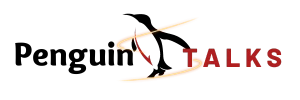Flutter vs Java: A Comprehensive Comparison for Mobile Development

Introduction
Welcome to our comprehensive comparison between Flutter vs Java and Java for mobile development. Flutter, Google’s open-source UI toolkit, and Java, a widely-used programming language, are both powerful tools for building mobile applications. Flutter offers a modern, reactive framework while Java has long been a staple in the mobile development world. Understanding the differences between these two languages is crucial for developers looking to make informed decisions about their projects. While Flutter provides a streamlined, cross-platform approach to app development, Java offers familiarity and robustness. By delving into the nuances of Flutter and Java, developers can make better-informed choices to suit their project requirements and development preferences. Let’s explore these two dynamic languages and uncover the best fit for your mobile development endeavors.
Flutter: Features and Benefits
Welcome to the world of Flutter: Features and Benefits. Flutter, Google’s UI toolkit, has revolutionized mobile app development with its modern framework and robust features. In this segment, we’ll provide an overview of the Flutter framework, highlighting its key features such as hot reload for fast iteration, expressive UI components, and native performance. Additionally, we’ll explore the myriad advantages of using Flutter for mobile app development, including its cross-platform capabilities, enhanced productivity, and vibrant developer community. Furthermore, we’ll delve into real-world case studies and examples of successful apps built with Flutter, showcasing its versatility and effectiveness in creating high-quality, visually appealing mobile applications. Join us as we uncover the unparalleled features and benefits of Flutter for your next mobile development project.
Java: Features and Benefits
Welcome to the world of Java: Features and Benefits. Java, a versatile and widely used programming language, has long been a cornerstone of mobile app development. In this segment, we’ll introduce you to the fundamentals of the Java programming language and its relevance in the realm of mobile development. We’ll delve into the key features and advantages that make Java a preferred choice for building robust and scalable mobile applications, including its platform independence, strong community support, and extensive library ecosystem. Additionally, we’ll showcase popular apps developed using Java, demonstrating its versatility and capability to power a wide range of mobile experiences. Join us as we explore the rich features and benefits of Java for your next mobile development endeavor.
Comparison of Flutter and Java
Welcome to our in-depth comparison of Flutter and Java for mobile development. In this segment, we’ll explore the key factors that developers often consider when choosing between these two powerful technologies. We’ll start by examining the performance of Flutter and Java applications, comparing factors such as speed, responsiveness, and resource consumption. Next, we’ll analyze the development speed and efficiency of both platforms, including factors like code reusability, development tools, and debugging capabilities. Finally, we’ll delve into the user interface (UI) and user experience (UX) considerations for Flutter and Java apps, exploring how each platform approaches UI design, animations, and overall user satisfaction. Join us as we uncover the nuances of Flutter and Java to help you make informed decisions for your mobile development projects.
Use Cases and Recommendations
Welcome to the section on Use Cases and Recommendations, where we explore the optimal scenarios for choosing between Flutter and Java in mobile development. Flutter excels in scenarios requiring rapid prototyping, cross-platform compatibility, and immersive UI experiences. On the other hand, Java shines in projects that prioritize platform-specific functionality, extensive device compatibility, and legacy system integration. By understanding the strengths and weaknesses of each platform, developers can make informed decisions based on their project requirements. In this segment, we’ll provide recommendations tailored to specific project needs, helping developers navigate the decision-making process and select the right technology stack for their mobile development endeavors. Join us as we uncover the ideal use cases and recommendations for leveraging Flutter and Java in your projects.
Conclusion: Flutter vs Java
In wrapping up our comparison between Flutter and Java for mobile development, let’s recap the key points we’ve discussed. Flutter, with its modern framework and cross-platform capabilities, offers developers the flexibility to build high-quality mobile apps efficiently. On the other hand, Java provides stability and compatibility with a wide range of devices, making it a reliable choice for traditional mobile development projects.
Developers need to explore both options and consider their project requirements carefully. If you’re looking for rapid development and a visually stunning user interface, Flutter may be the way to go. However, if your project requires seamless integration with existing systems or extensive device compatibility, Java might be the better choice.
Ultimately, the decision between Flutter and Java depends on your specific project needs and development preferences. We encourage developers to experiment with both technologies, leverage their unique strengths, and choose the best fit for their projects. By staying informed and exploring the possibilities, developers can unlock the full potential of Flutter and Java in their mobile development endeavors. So, go ahead, dive in, and create amazing mobile experiences with the technology that suits your needs best! Flutter vs Java,penguintalks.com





